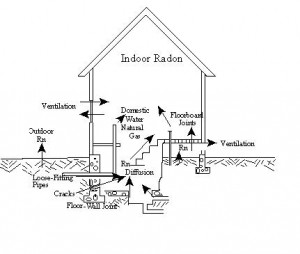Environmental Health – Air Quality
Open Burning
WHEN IS A BURNING PERMIT REQUIRED IN CARROLL COUNTY?
Open burning in Carroll County is regulated under Maryland Department of the Environment Air Quality regulations and Maryland Department of Natural Resources Forest Fire Protection regulations. A burning permit is required for all open burning, except for small recreational fires such as campfires and for outdoor cooking of food. Burning in a barrel is considered to be open burning. Maryland Air Quality Regulations prohibit the burning of trash or refuse at any time.
WHAT ARE THE ALTERNATIVES TO BURNING?
For air quality and fire protection reasons, alternatives to open burning should be considered. Rather than burning leaves, they can be shredded, mowed or bagged, and used as mulch around plants or added to a compost pile. Likewise tree trimmings can be chipped and used as mulch, or left as a brush pile for wildlife habitat. Yard waste, including leaves, brush and wood, can also be taken to the Carroll County Central Landfill for recycling.
HOW DO YOU APPLY FOR A BURNING PERMIT?
A permit application may be printed using this link or obtained in person at the Carroll County Bureau of Environmental Health office. Residential and agricultural permits may be obtained for short term (30 or 60 days) or long term (six month) periods. Burning Permits can no longer be issued for commercial land clearing activities and land clearing debris must be disposed of under Maryland Department of the Environment Solid Waste Regulations. When an application is submitted, a site visit to the property is conducted to ensure that all requirements can be met prior to issuance of the permit.
WHAT ARE THE REQUIREMENTS FOR OPEN BURNING?
- The burn site must be located at least 1500 feet (or 500 yards, the equivalent of five football fields) from any neighboring dwelling, roadway, or place where people work or congregate.
- Material to be burned must have originated on the premises.
- Materials permitted to be burned are dry brush, dry leaves and branches less than 6” in diameter. Treated or painted wood, poison ivy and poison sumac, and materials which produce dense smoke may not be burned.
- There is a natural or constructed fire break at least 10 feet wide completely around the material to be burned that is free of flammable materials
- Adequate personnel and equipment must be present at the burn site to prevent fire from escaping until the last spark is out.
- A hazardous condition or nuisance may not be created – be aware of weather and wind conditions and considerate of neighbors.
- Prior to any burn the Carroll County Emergency Operations Center must be notified at __________ .
- THERE IS A BURNING BAN IN EFFECT FOR AIR QUALITY REASONS FROM JUNE 1 THROUGH AUGUST 31 EACH YEAR. BURNING BANS DURING DRY CONDITIONS MAY ALSO BE IMPOSED BY THE MARYLAND FOREST SERVICE AT OTHER TIMES.
FOR MORE INFORMATION CONTACT:
► Carroll County Health Department, Bureau of Environmental Health 410-876-1884
Resources: Open Burning FAQ’s, Open Burning Regulations.
If you would like to allow part your property to be burned for a Fire Department Training Exercise, please complete the Fire Department Training Exercise Application and send it to carrollcounty.environmental@maryland.gov
Radon
Radon is a gas that has no smell and no color. It is the number one cause of lung cancer in non-smokers and raises the risk even higher for smokers.
Sources: Earth and rock beneath home; well water; building materials.
Health Effects: No acute symptoms. Estimated to cause about ten percent of lung cancer deaths. Smokers are at higher risk of developing radon-induced lung cancer.
Steps to reduce Radon exposure: Test your home for radon; Get professional advice before planning and carrying out radon reduction measures; Seal cracks and other openings in the basement floor; Ventilate crawl space; Treat radon contaminated well water by aerating or filtering through granulated activated charcoal.
Resources: http://www2.epa.gov/radon
Radon Exposure in Your Home….What’s Your Radon Risk? – Maryland Department of the Environment
Maryland residents can get a radon test kit for their homes for only $3 – Test kit offer
Radon – Maryland Department of Health
Radon Fact Sheet
Carbon Monoxide
Sources: Unvented kerosene and gas heaters; leaking chimneys and furnaces; gas stoves; Automobile exhaust from attached garages; Environmental tobacco smoke.
Health Effects: At low concentrations, fatigue in healthy people and chest pain in people with heart disease. At higher concentrations, impaired vision and coordination, headaches, dizziness, confusion, and nausea. Fatal at very high concentrations.
Steps to reduce Exposure: Keep gas appliances properly adjusted; consider purchasing vented gas space heaters and furnaces; use proper fuel in kerosene space heaters; install and use exhaust fan vented to outdoors over gas stoves; open flues when gas fireplaces are in use; do not idle car inside garage; have a trained professional inspect, clean, and tune-up central heating system.
Sources: Deteriorating or damaged insulation, fire proofing, or acoustical materials.
Health effects: No acute symptoms. Chest and abdominal cancers and lung diseases. Smokers are at higher risk of developing asbestos induced lung cancer.
Steps to reduce exposure: Seek professional advice to identify potential asbestos problems. Use trained and qualified contractors for control measures that may disturb asbestos for cleanup. Follow proper procedures in replacing wood stove door gaskets that may contain asbestos.
Resources:
Asbestos
Sources: Deteriorating or damaged insulation, fire proofing, or acoustical materials.
Health effects: No acute symptoms. Chest and abdominal cancers and lung diseases. Smokers are at higher risk of developing asbestos induced lung cancer.
Steps to reduce exposure: Seek professional advice to identify potential asbestos problems. Use trained and qualified contractors for control measures that may disturb asbestos for cleanup. Follow proper procedures in replacing wood stove door gaskets that may contain asbestos.
Lead
Sources: Automobile exhaust. Sanding or open flame burning of lead based paint. Activities involving lead solder.
Health effects: Impaired mental and physical development in both fetuses and young children. Decreased coordination and mental abilities; damage to kidneys and nervous system, and red blood cells. May increase blood pressure.
Steps to reduce exposure: If you suspect that the paint you are removing may contain lead, have it tested. Leave lead-based paint undisturbed; do not sand or burn off. If lead exposure is suspected, consult your health department about appropriate removal and clean-up procedures and have your blood lead levels tested.
Mold
Sources: Mold grows in humid environments where there is excessive moisture in buildings or on building materials such as insulation and drywall in basements and bathrooms or where a water leak has occurred.
Health Effects: Headaches, breathing difficulties, skin irritation, allergic reaction and aggravation of asthma symptoms. The vast majority of health problems with mold come from making existing problems worse. Research is ongoing.
Steps to reduce Mold exposure: Prevention is the first step. If there are areas in your home that have excessive moisture, take steps to reduce it. Ventilating the area better, sealing the area where the moisture originates (such as basement walls) or installing dehumidifiers are ways to do this. If mold comes from leaks or flooding, you probably will need to hire a specialist to correct the problem.

